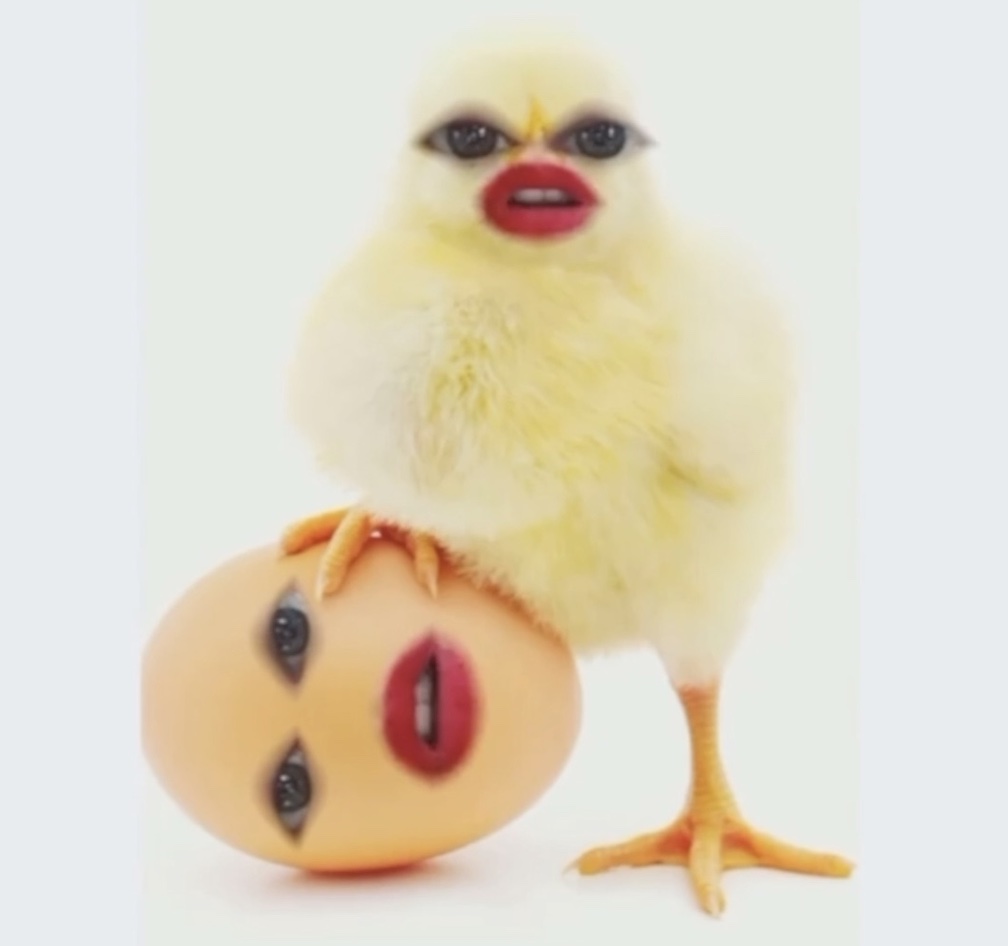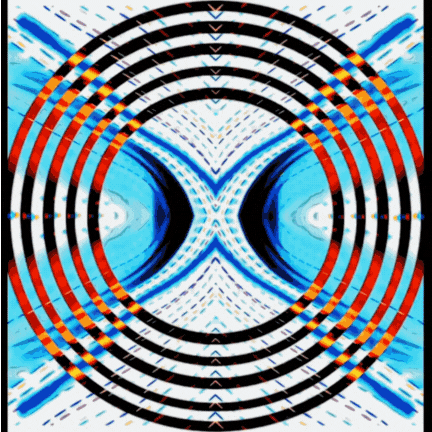CATALOGING ANIMATION ART AND SOURCE MATERIALS
ARTIST ORIGIN STORY: LIPSYNC VIDEOS
When I first began to play with Snapchat in 2016, I realized the potential to create videos on my phone without uploading the videos to my computer. It was a very quick and easy method and could be done from anywhere, given internet access. I started experimenting with some of the more interesting filters.
In 2018, I stumbled upon an unintended feature in Snapchat. While recording a video using an iPhone, the app also recorded whatever audio was also playing through the iPhone. To experiment with this feature I began, as one does, with what is already known. At the time, people were using Dubsmash to lipsync to short audio segments. However, the app limited the audio segments to just a few seconds and the library was pre-selected.
I began experimenting with making lipsync videos and uploading them to my Instagram wall. At first I came across the Instagram algorithmic policing that removed content with copyrighted audio. I got around this initially by using Snapchat filters that inherently altered the audio. As I continued, I learned how to use Audacity to edit audio to evade Instagram algorithmic detection (more on this later).
Then I started posting videos as Instagram stories, which allowed me to access more filters and effects. Doing so allowed me to make videos more dynamic. Creating lipsync videos gave me the experience to learn new skills using Snapchat, Instagram, Audacity, iMovie, and the photo app on my iPhone such as:
- Video recording
- Video editing
- Color theory
- Video/audio correction
- Filter/effects application
- Stacking Filters
- Syncing Music to Video
Many of these projects can be found on my Instagram Wall and Highlights. To give you an idea, here is a compilation of videos I've done over the years.
LIPSYNC VIDEO COMPILATION
STUMBLING UPON AN ART PRACTICE
What began as color correction of static drawings accidentally became a step in creating animations.
I began drawing in 2021 after spending a night at my friend Alfie's apartment in Bushwick, using acrylic paints and oil pastels to draw on a roll of paper he'd salvaged from the curb of a construction site. I didn't consider myself artistic or creative. My perfectionistic tendencies overwhelmed me and I hesitated to commit color and shape to paper. But with Alfie's encouragement and Björk's Gling Gló album playing, my fear receded and I began to have fun. Soon thereafter, I compiled a few humble art supplies and started drawing from a more childlike, intuitive place.
Editing photographs of my drawings was originally done out of necessity to expand the color palette beyond the colors and materials I had available to me. Art supplies are expensive and, in the beginning, I started drawing with a handful of Le Pen markers, a box of 64 colored pencils and a pack of 25 Cray Pas Junior Artist pastels. To achieve images with colors I wanted to express in my drawings but didn't have, I would edit images using a variety of techniques on my iPhone.
What I discovered, to my wonder, delight, and consternation, was that I couldn't decide on a single edited static image. I loved how moving the warmth or tint slider from left to right gave the illusion of movement in the image. My first animations, such as the Star animation below, were screen recordings taken while moving the sliders back and forth.
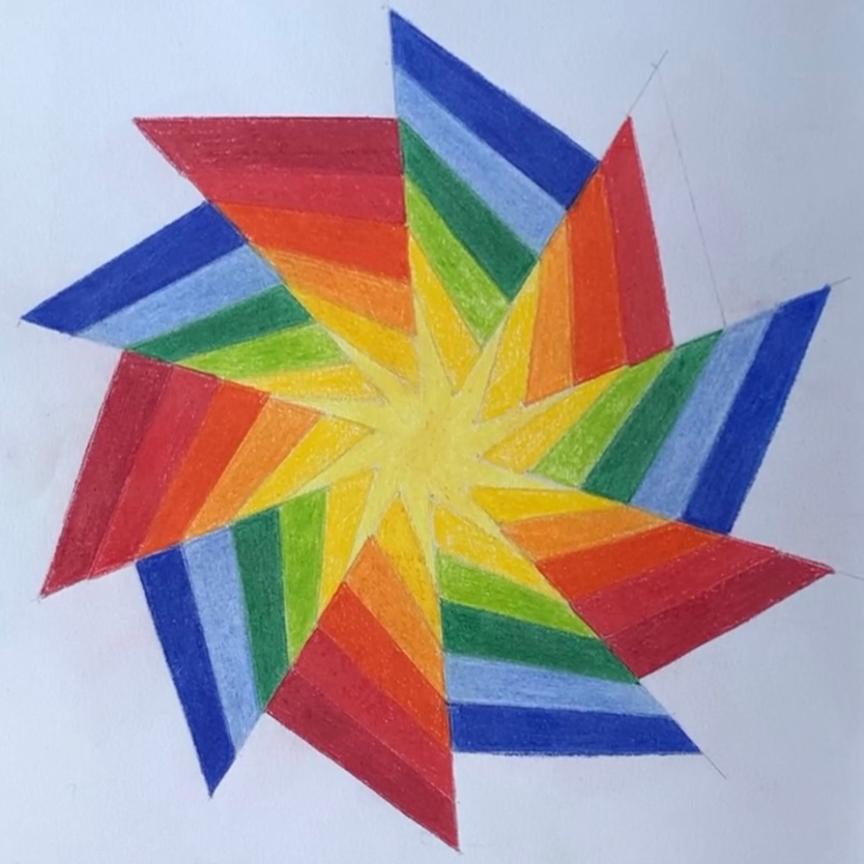


Blue Star animation
ANIMATION CELS
After discovering I could turn a static image into an animation video using a single technique, I wanted to expand on the possibilities of what I could achieve by layering techniques.
The process of animation I use begins with a physical drawing or painting. I have found that overlapping colors of different hue, saturation, and lightness allows for greater potential to pull out different shapes and textures when editing later.
I photograph the physical art with my iPhone and view the image in the Apple photo app. By holidng my finger down on the image I'm able to lift the subject out of the image and I can copy that image into an Instagram story file, where I can play with the image, changing the size and direction. I can then tile the subject to create a composite image. I am often surprised by the result as unintended complex shapes begin to take place.
I use the Apple photo app, Instagram filters, and iMovie filters to edit multiple animation cels. By overlapping colors multiple copies of the same image using the Apple photo app, Instagram filters, and iMovie filters and changing the contrast, warmth, tint, saturation, and vibrance, the resulting images become more distinct from one another.
In the case of this Black and White animation, I reduced the saturation to zero to create a black and white animation cel (Black) and then took a negative image to create a separate animation cel (White). I also changed the dimensions slightly in the White animation cel so that, when overlapping with the Black animation cel, the animation would not just oscillate between two extremes, but would also grow and shrink, giving the illusion of 3D movement.
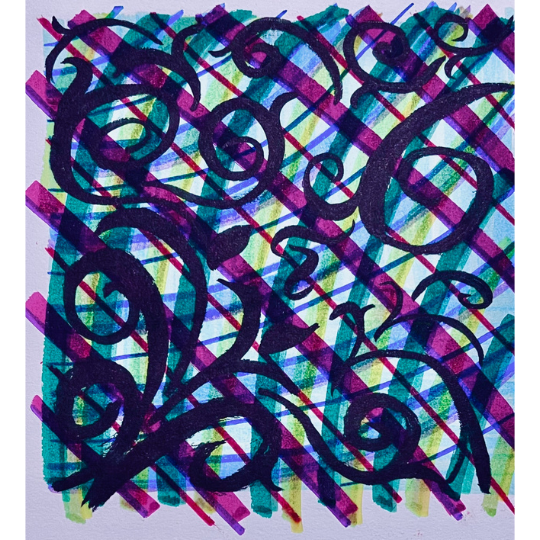


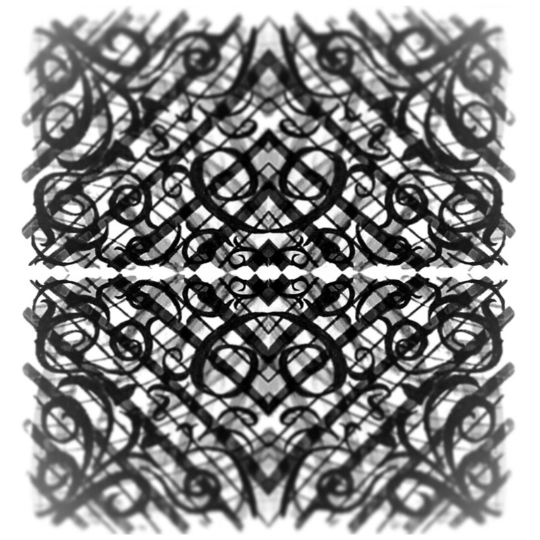
Black and White source images
RETAINING SOURCE FILES
When initially creating a video in iMovie, I like to stack the animation cels arbitrarily. I don't direct the motion intentionally. I like to see what appears organically. Many times, I'm surprised by the resulting movement in the videos. Through experimentation I am able to adjust the frames to impact the resulting animation. I learn new tricks every time I composite animation cels and edit them.

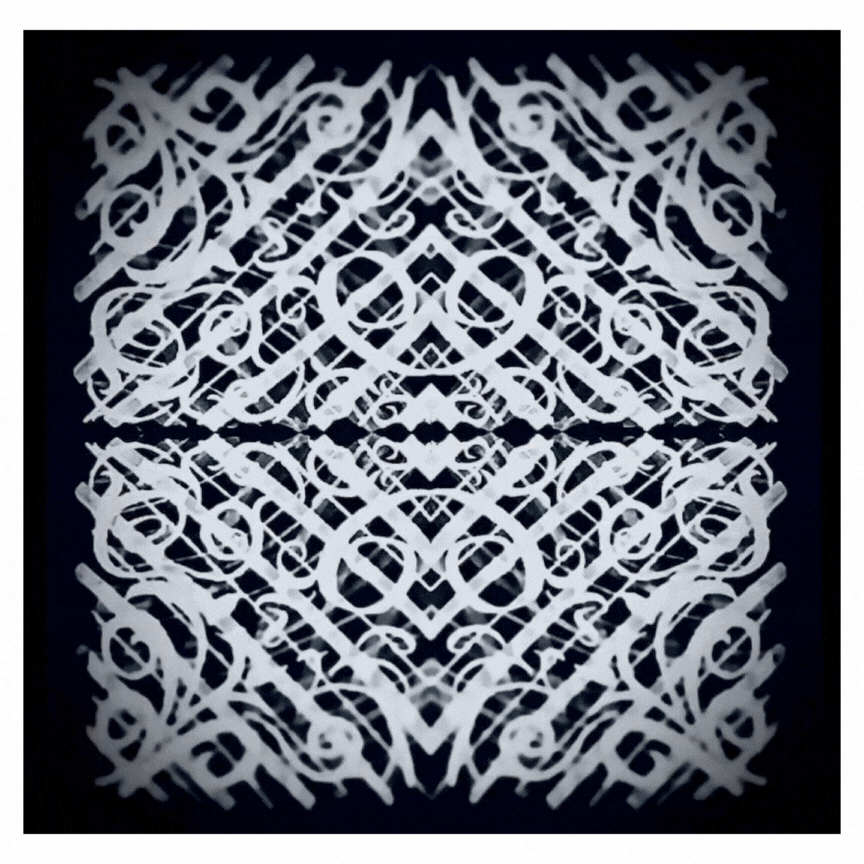
Black and White animation variations
The distinction is subtle, but the contrast in movement shows why it is important to retain source files for animation videos over time. As my skills improve, or as my aesthetic changes, I might want to revisit the animation cels and use them in new ways.
EMOTION: MOVEMENT AND MUSIC
With limited skill and experience, I've become resourceful in editing animations. My primary goal when creating an animation is to elicit emotion through movement and music. My work comes from an intuitive, emotional place without words and reflects the synesthetic non-verbal way I experience the world. The way I see the world has led me to find affinity with the great artits Marc Chagall, František Kupka, Wassily Kandinsky, and Hilma af Klint because they too expressed complex thoughts, intuition, and spirituality through visual media. I am also greatly inspired by tiles, tessalations, and sacred geometry to which I feel a strong connection. I'm drawn to esoteric and mystical visualizations.
The video below on the left shows how I stack animation cels to create an animation in iMovie.
Below, on the right, the animation repeats at a constant rate. It has an inherent rhythm that begs for the addition of music. In the video editing process, I can alter that rhythm. Finding music that corresponds to a particular animation is really satisfying. Sometimes it happens naturally when a song I am listening to while editing matches up to the video like magic. I've amassed many playlists on Apple Music full of songs that have interesting features that would lend themselves to animations.
Other times I have to figure out the animation's inherent rhythm by tapping the rhythm into a BPM calculator, and then searching for songs with the same beats per minute (BPM) or a complimentary BPM as the animation.
Fortunately, there are many online resources that list songs by BPM. I'm a fan of this site hosted by the Cheriton School of Computer Science.
Finding music that fits an animation is an explorative process that I have to iterate until I find a song that meets the following criteria:
1. It must enhance the animation's movement.
2. It must fit the emotion of the animation.
3. It should be available on Instagram.
The animation below has an inherent rhythm of 122 BPM. I've paired the song on Instagram with Os Mutantes' "Bat Macumba".


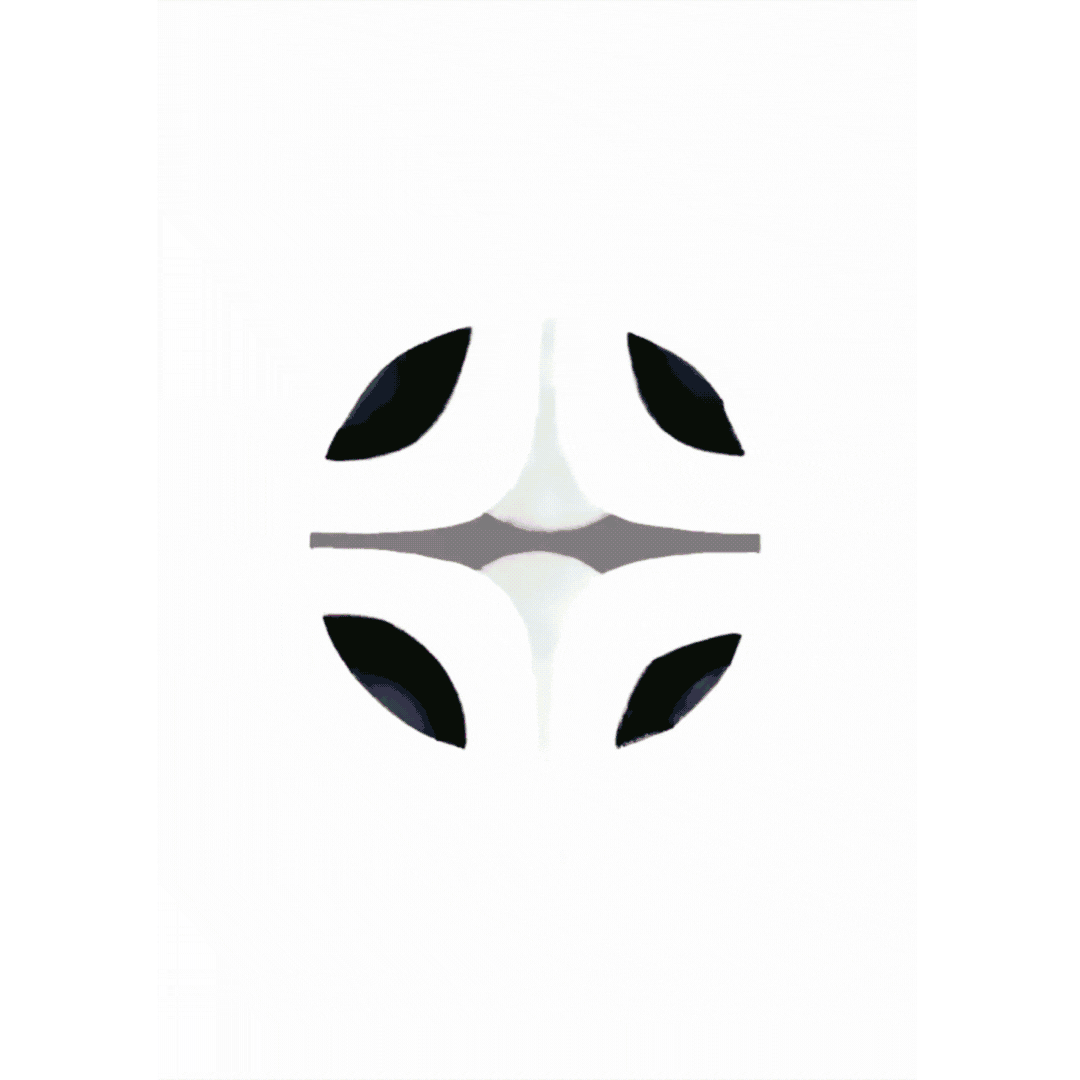
Os Mutantes animation process
Relying on Instagram's music library is a double-edged sword. Audio files act as metadata on social media platforms like Instagram and TikTok. A video is more likely to to be seen by more people if it's linked to a song in the library. The recording artist or copyright holder benefit from the plays and exposure. But linking a video file to a platform provided audio file means that you are reliant on the platform's library to keep that file available in perpetuity . As we've seen with music label leviathan UMG's standoff with TikTok, a music label is free to pull its artists' catalogs at will, rendering an uploaded video without sound.
There are ways of getting around the Instagram library limitations by embedding sound in the uploaded video file. Instagram's copyright infringement algorithm is only able to detect songs in its library. Even if that library were to expand, the algorithm is unable to detect deviations from the literal expression of the song. By altering the pitch, tempo, echo, or other aspects of the song file, the video with embedded audio evades Instagram algorithm detection and Instagram taking the video down.
Does this violate copyright? I don't think so. I think it falls under the "fair use" exception under U.S. law. I am not making a profit off of posting the videos to Instagram. I am using the music for educational purposes. I'm using relatively small portions of the song. Nor am I harming the original artist or copyright holder from profiting off their copyrighted works.
ULTIMATE GOALS
My ultimate goal with learning to make animation videos is to acquire new skills so I can make better animations and better videos. I'd love to intergrate my art as projections at live music shows as a VJ artist.
I'd also like to learn advanced techniques to make more dynamic animations using AI and 3D rendering tools to create augmented and virutual reality features in museums and public spaces.
To see some of my recent inspirations, please visit my Animation Inspiration page.
To see more of my work, check out my Instagram wall. I also have a lot of art catalogued in the highlights at the top.
If you like what you see here or on Instagram, please feel free to reach out via email, Instagram or LinkedIn. I'd love to connect.
